Copy link
Regional Anesthesia in Trauma
Last updated: 02/08/2023
Key Points
- New regional anesthesia techniques and the widespread use of ultrasound guidance have expanded the role of regional anesthesia in the emergency department and prehospital settings.
- Regional anesthesia in trauma patients has several benefits, including superior analgesia, decreased opioid-related side effects, improved surgical outcomes, and decreased length of stay.
- There are several special considerations while performing regional anesthesia in trauma patients.
Introduction
- Regional anesthesia is an effective treatment modality for analgesia in trauma patients. The primary approaches to regional anesthesia in trauma patients are peripheral nerve blocks (PNB) and neuraxial anesthesia. PNBs can either be single-shot injections or placement of perineural catheters for prolonged analgesia.
- The widespread adoption of ultrasound guidance techniques has increased the safety of PNBs and helped contribute to their increased use. Once mostly restricted to the perioperative setting, the utilization of regional anesthesia has expanded into the emergency department and prehospital settings.1,2
- The undesirable systemic side effects of opioids, including respiratory depression and somnolence, are avoided with regional anesthesia. For isolated extremity injuries, PNBs can serve as the sole analgesic regimen.1-3
Benefits of Regional Anesthesia
- The main benefits of regional anesthesia in trauma patients are listed in Table 1.2

Table 1. Benefits of regional anesthesia in trauma patients. Adapted from Slade IR, et al. Anesthesiol Clin. 2018.2
Regional Anesthesia Blocks in Trauma Patients
- Specific regional anesthesia blocks in trauma patients and their special considerations are listed in Table 2.
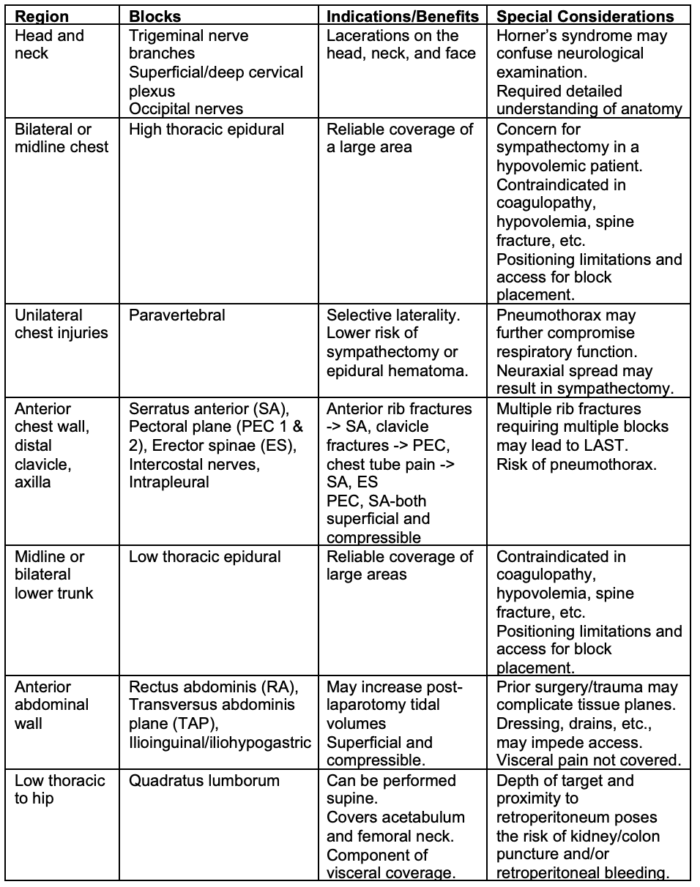
Table 2a. Specific regional anesthesia blocks in trauma patients and their specific considerations. Adapted from Slade IR, et al. Anesthesiol Clin. 2018.2
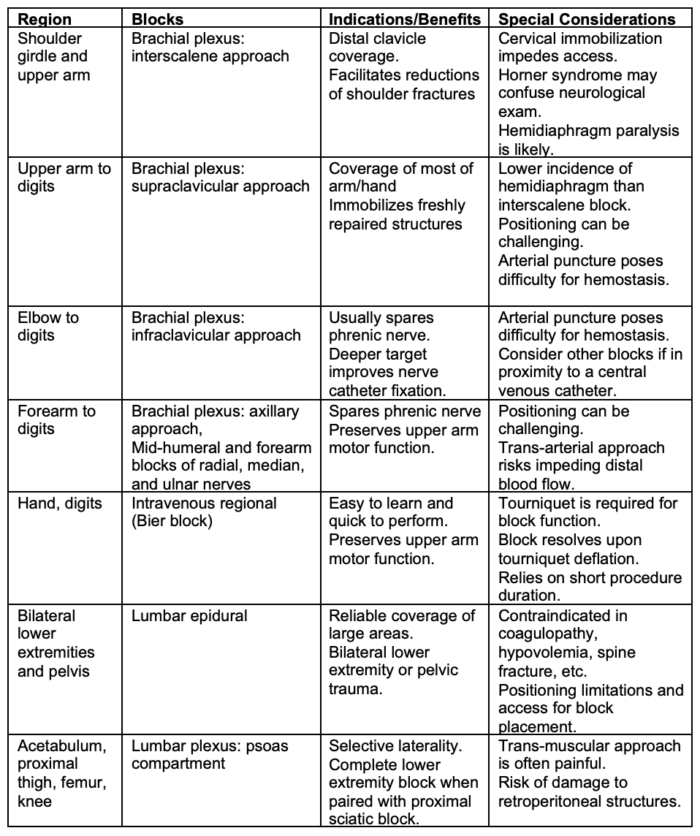
Table 2b. Specific regional anesthesia blocks in trauma patients and their specific considerations. Adapted from Slade IR, et al. Anesthesiol Clin. 2018.2
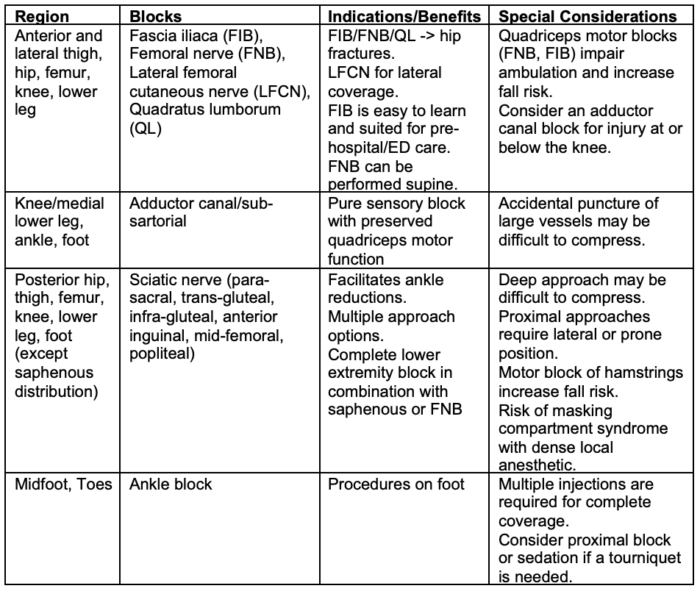
Table 2c. Specific regional anesthesia blocks in trauma patients and their specific considerations. Adapted from Slade IR, et al. Anesthesiol Clin. 2018.2
Special Considerations in Trauma Patients
- Special considerations for regional anesthesia in trauma patients are listed in Table 3.
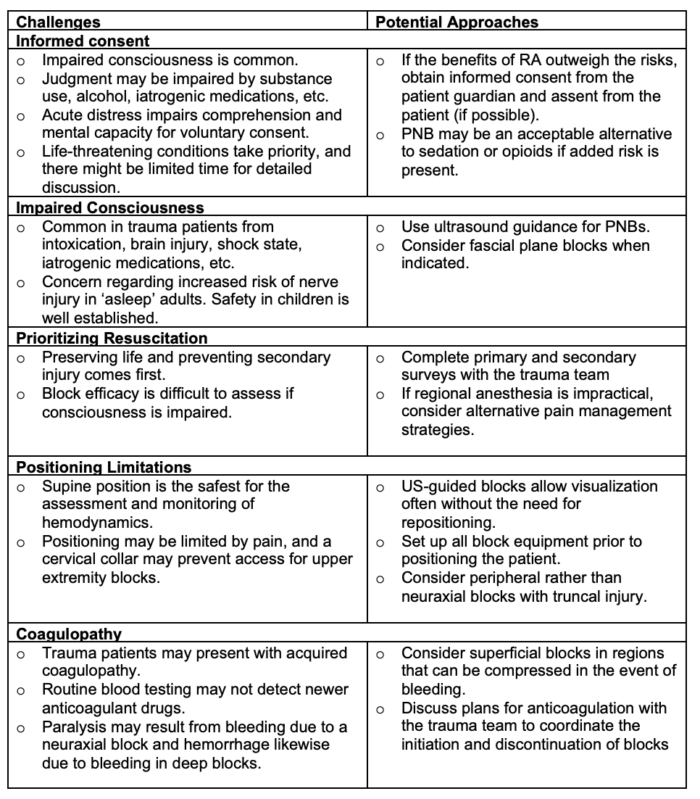
Table 3a. Special considerations for regional anesthesia in trauma patients. Adapted from Slade IR, et al. Anesthesiol Clin. 2018.2
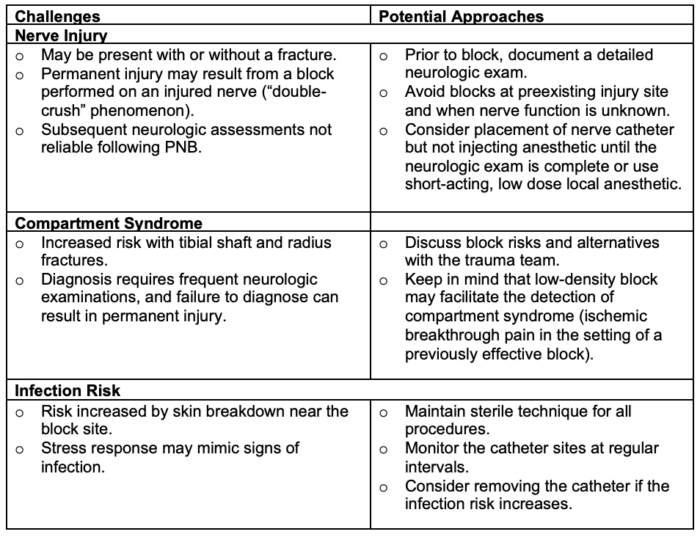
Table 3b. Special considerations for regional anesthesia in trauma patients. Adapted from Slade IR, et al. Anesthesiol Clin. 2018.2
References
- Wu JJ, Lollo L, Grabinsky A. Regional anesthesia in trauma medicine. Anesthesiol Res Pract. 2011; 2011:713281. PubMed
- Slade IR, Samet RE. Regional Anesthesia and Analgesia for Acute Trauma Patients. Anesthesiol Clin. 2018;36(3):431-54. PubMed
- George S, Johns M. Review of nonopioid multimodal analgesia for surgical and trauma patients. Am J Health Syst Pharm. 2020;77(24):2052-63. PubMed
Copyright Information

This work is licensed under a Creative Commons Attribution-NonCommercial-NoDerivatives 4.0 International License.